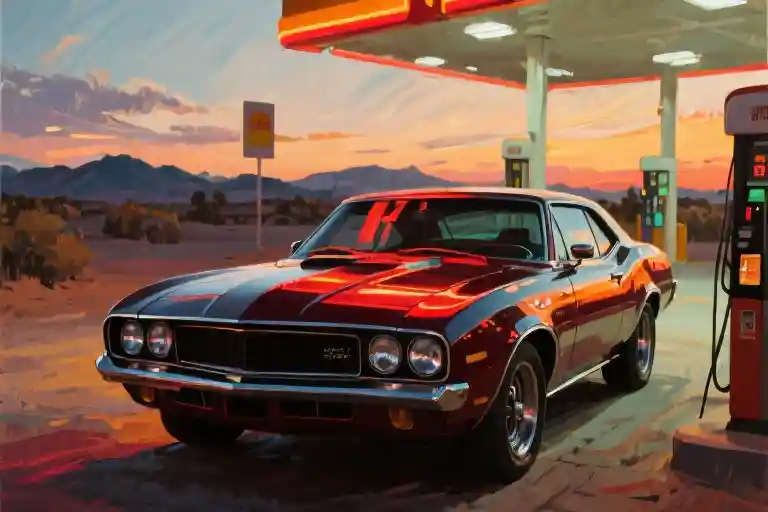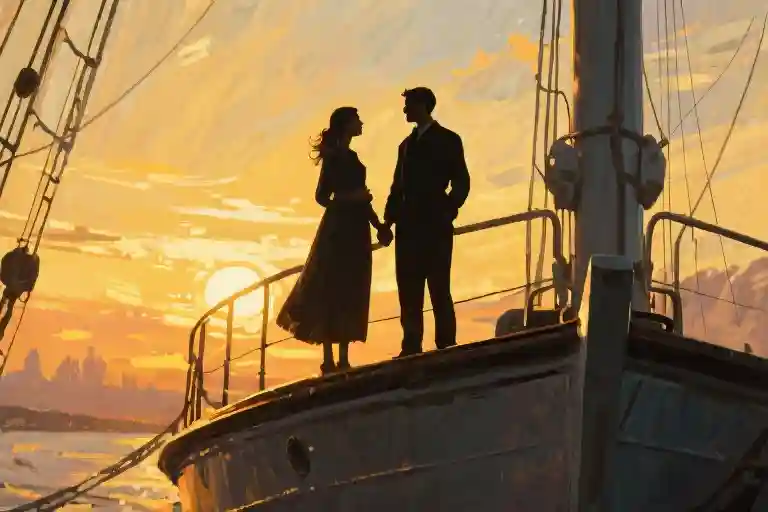The roar of engines vibrates through your seat, the scent of burnt rubber hangs in the air, and your pulse races faster than the tachometer’s needle. Somewhere between the screeching tires and flashing checkered flags, two people discover that the most dangerous curve isn’t on the track—it’s the one their hearts take when they least expect it. This is driving romance, where love doesn’t just move at its own pace; it accelerates into the red zone, fueled by adrenaline and the intoxicating mix of competition and connection.
You’ve felt it before—that electric moment when a story makes your grip tighten on the book as if you’re steering through the final lap yourself. Maybe you’ve searched bookstore shelves for more of that specific thrill, only to find romance sections dominated by ballrooms and billionaires. Where are the stories where sparks fly literally and figuratively, where the chemistry between characters burns as hot as overheated engines?
This exploration isn’t just about cataloging books where people fall in love near fast cars (though we’ll certainly cover those). It’s about understanding why high-speed environments create such potent backdrops for relationships. The way confined spaces like race car cockpits or cross-country road trips force intimacy. How the constant threat of danger strips away pretenses, leaving raw emotion exposed like live wires. And perhaps most compelling—how the very qualities that make someone exceptional behind the wheel often make them disastrous at relationships, until the right person comes along to navigate those hairpin turns together.
From the pit lanes of professional racing circuits to the endless highways cutting through desert nights, we’ll examine how movement itself becomes a metaphor for emotional journeys. You’ll discover not only what to read next when craving this particular blend of speed and sentiment, but why these stories resonate so deeply with those who love them. The recommendations ahead range from pulse-pounding competitions to leisurely road trips where the scenery matters less than the person in the passenger seat—because sometimes the slow burn hits hardest when you’ve got miles to go before anything gets resolved.
Consider this your pit crew for navigating driving romance. We’ve got the tools to tune your reading list for maximum performance, whether you’re here for the technical details of professional racing or the life-changing conversations that only happen at 3 AM when the highway’s empty and the guardrails disappear into darkness. The starting lights are on—let’s begin.
The Anatomy of Driving Romance
The scent of burning rubber mixes with expensive perfume in the pit lane. A wrench clatters to the ground as two mechanics – former lovers now forced to work together – exchange glances over a damaged suspension. This is driving romance, where horsepower and heartache share the same garage.
At its core, driving romance isn’t about cars as metal objects, but as vessels for human connection under extraordinary circumstances. The genre thrives on three combustible elements:
Velocity as foreplay
Speed does curious things to human chemistry. When characters regularly flirt with 200mph, their emotional guards drop faster than a gearshift. Racing scenes become emotional accelerants – that moment when a driver trusts their partner to call the perfect racing line mirrors how lovers learn to navigate relationships.
Confined spaces, expanding feelings
Whether it’s the claustrophobic cockpit of a Formula 1 car or the worn leather seats of a cross-country convertible, vehicles force proximity. The genre’s magic lies in how a four-hour traffic jam can reveal more about a couple than four months of dating. Road trips become emotional time-lapse photography.
Danger as emotional truth serum
Near-death experiences strip away pretense. When characters face literal crashes, they stop caring about metaphorical ones. The pit wall explosion that leaves them covered in foam becomes the catalyst for overdue confessions. Readers crave these high-stakes environments precisely because they bypass small talk.
A common misconception reduces driving romance to ‘cars with feelings.’ The best works understand vehicles as emotional landscapes – the way a vintage Mustang’s stubborn transmission mirrors its owner’s commitment issues, or how a hybrid’s seamless power transfer reflects a couple’s growing synchronization.
The genre’s beating heart remains human connection, with engines merely providing the rhythm. As we’ll see in examining seminal works, the most memorable moments happen when the ignition switches off – when the roar of the crowd fades and all that’s left is two people realizing they’ve been racing toward each other all along.
The Heartbeat of Speed: Essential Reads in Driving Romance
The best driving romance novels don’t just put characters behind the wheel—they make the vehicle itself a crucible for transformation. These stories capture that peculiar alchemy where roaring engines and whispered confessions share equal space, where the smell of gasoline mixes with the electricity of first touches. Let’s examine the masterworks that define this genre.
When Sparks Fly in the Pit Lane: K. Bromberg’s Driven
Bromberg’s Driven series demonstrates how confined spaces amplify romantic tension. The pivotal maintenance bay confrontation in Book 1 shows protagonist Colton’s dual nature—his hands equally skilled at calibrating engines and tracing a woman’s spine. What makes this scene extraordinary isn’t the shouted accusations about race strategy, but how a torque wrench becomes a conduit for unsaid desires when passed between characters. The novel excels at using mechanical terminology as emotional metaphor (a ‘misaligned suspension’ reflecting relationship instability), proving technical details can deepen rather than distract from romance.
Reality’s Raw Edge: Rush from Screen to Page
Comparing the Rush novelization to its cinematic counterpart reveals fascinating adaptations. While the film emphasizes Niki Lauda and James Hunt’s rivalry through breathtaking race footage, the book version lingers on quiet moments—the way a driver’s glove creases when clutching a hotel room key, or how champagne spray after victory soaks through a love letter in a breast pocket. This duality showcases driving romance’s unique strength: it thrives equally in deafening speed and aching stillness.
The Open Road as Confessional: On the Road‘s Moving Dialogues
Kerouac’s classic, though not traditionally romantic, demonstrates how vehicle motion shapes intimacy. Notice how Dean and Sal’s most vulnerable conversations occur during night drives—the windshield framing passing stars like a zoetrope of their dreams. Modern authors have refined this technique; contemporary road trip romances use GPS errors and roadside diner stops to force proximity, turning Google Maps into an unwilling matchmaker.
Gears and Gowns: Steel & Speed‘s Genre-Bending Experiment
This steampunk oddity deserves attention for reimagining racing dynamics. When Lady Penelope’s brass-gilded racer requires literal fire to start (mirroring her slow-burn relationship with the blacksmith who built it), we see how vehicle mechanics can externalize emotional states. The novel’s best sequences involve heated arguments about piston designs that are transparently about commitment fears—a reminder that in skilled hands, even carburetor descriptions can pulse with subtext.
What these works share is an understanding that vehicles aren’t just settings—they’re relationship barometers. A well-written driving romance makes readers hear the protagonist’s heartbeat over the engine’s roar, and that’s a literary magic no other genre quite replicates.
The Mechanics of Love: Writing Driving Romance
Getting the technical details right in racing romance is like tuning an engine – too much focus on the mechanics and you lose the human connection, too little and the story lacks authenticity. The sweet spot lies in using those details to amplify emotional stakes rather than overwhelm them.
Three Rules for Technical Balance
First, remember that every gearhead term should serve the relationship arc. Describing a protagonist adjusting the fuel mixture isn’t compelling unless we see how that late-night garage session strains their new romance. In K. Bromberg’s Driven, the detailed pit crew sequences work because they’re framed through the love interest’s awe at the driver’s concentration.
Second, create a glossary of essential terms and stick to it. Most readers don’t need to distinguish between oversteer and understeer unless the difference becomes pivotal in a love confession scene. Choose about five key technical elements that mirror emotional themes – maybe tire grip representing trust, or turbo lag echoing miscommunication.
Third, let characters explain mechanics through conflict. A rookie mechanic explaining differentials to a skeptical love interest creates natural exposition while advancing their dynamic. The best racing romances make the car itself a character in the relationship – not through anthropomorphism, but by showing how shared mechanical passion builds intimacy.
Structuring Race Scenes That Accelerate Romance
The classic three-act race structure (qualifying/crisis/final lap) maps beautifully onto romantic development. Qualifying rounds establish professional tension that mirrors romantic tension – maybe two rival drivers exchanging lap times and lingering glances. The middle crisis (engine failure, weather change) forces physical closeness in the garage or shared trailer, while the final lap becomes a metaphor for emotional vulnerability as they race toward reconciliation.
Dialogue during races should be clipped and visceral. Romantic revelations happen in pit stops, not at 200mph. Save the profound confessions for when the helmet comes off and the adrenaline’s still thrumming through their veins. That post-race haze where endorphins lower emotional barriers is gold for romance writers.
Road Trip Intimacy in Confined Spaces
Unlike track racing’s structured intensity, road trip romance thrives on forced proximity and changing landscapes. The car becomes a moving confessional where conversations unfold differently than in static settings. There’s a rhythm to road trip dialogue – long silences punctuated by sudden revelations when the scenery shifts.
Key scenes often happen at these three points:
- The first gas station stop (awkward new dynamic)
- A roadside diner at midnight (guarded truths emerge)
- The unexpected detour (relationship turning point)
Conflict blooms naturally when navigation errors or mechanical issues force unplanned stops. A well-written roadside argument about map reading can reveal more about a relationship than pages of bedroom dialogue. The genius of road trip romance lies in how vehicle problems externalize emotional ones – that sputtering engine isn’t just a plot device, it’s the relationship’s warning light.
The Gas Station Scene Catalogue
Every driving romance needs its version of the gas station scene – that liminal space where strangers become lovers. Here’s how to refresh this staple:
- The Midnight Snack Run: Fluorescent-lit junk food becomes an intimacy catalyst when characters share childhood stories by the nacho cheese dispenser.
- The Wrong Turn: Getting lost leads to an obscure station with one pump and a mechanic who sees right through their denial.
- The Storm Stop: Rain forces them under the awning where proximity erases personal space boundaries.
- The Almost Kiss: By the air pump, where the hiss of filling tires matches their held breath.
These micro-scenes work because gas stations represent temporal pockets outside normal life – no one’s best self at 3AM next to a slushie machine, which makes honesty inevitable. The grease-stained hands, the shared bag of chips, the way someone leans against a car hood explaining their life story – this is where driving romance finds its beating heart.
What makes these scenes resonate isn’t the vehicles but how movement creates emotional momentum. Whether it’s the controlled chaos of a racetrack or the wandering freedom of backroads, the best driving romances understand that sometimes you need to be in motion to stand still with your feelings.
The Evolution of Driving Romance: Where Rubber Meets the Road Ahead
The scent of burning rubber and gasoline used to dominate these stories, but lately there’s a new aroma creeping into the garage – the faint hum of electric motors. Young writers are plugging into this shift, finding fresh voltage in what was once purely a combustion engine affair.
Take Lila Chenault, whose debut novel Silent Speed features rival Formula E drivers trading insults and sparks (both literal and metaphorical). “There’s something intensely modern about electric racing romance,” she explains over the noise of a Brooklyn coffee shop that somehow mirrors the controlled chaos of her fictional pit lanes. “The tension isn’t just between characters – it’s between tradition and innovation. When my protagonist argues with her old-school mechanic about regenerative braking systems, they’re really debating how much past baggage to bring into a new relationship.”
Publishing data reveals this isn’t just niche experimentation. Mills & Boon reports a 37% increase in submissions featuring alternative fuel vehicles since 2021, while indie publisher Torque Press has launched an entire imprint called Voltz dedicated to “electrified love stories.” Editorial director Marcus Rhee observes: “Readers still want the adrenaline rush, but they’re responding to protagonists who grapple with sustainability alongside heart palpitations.”
What does the audience actually crave? A recent Romance Readers Annual survey yielded surprising results:
- Traditionalists (42%): “Keep the roaring V8s and oil-stained coveralls”
- Innovators (29%): “Give us solar-powered road trips and charging station meet-cutes”
- Hybrid enthusiasts (27%): “Why choose? Have your vintage Mustang fall for a self-driving AI”
- Wild cards (2%): “Steampunk airship races with corset-related subplots” (We see you, niche faction)
The most requested mashups reveal where the genre might accelerate next:
- Apocalyptic Road Romances: Think Mad Max meets Pride and Prejudice – gasoline becomes currency, and the last functional mechanic holds hearts hostage
- Time-Loop Racing: Groundhog Day on the Nürburgring, where rivals relive the same catastrophic crash until they get the emotional resolution right
- Cybernetic Love Stories: When your one-night stand can literally download your driving technique – and your childhood trauma
Critics argue this expansion risks losing the genre’s essence, but veteran author Javier Mendez (whose Pit Lane Confidential defined 2000s racing romance) disagrees: “The core was never pistons or petrol – it’s about people forced into close quarters by velocity. My first novel had characters stuck in a broken-down ’68 Camaro. Tomorrow’s classic might have them debugging a Tesla’s firmware during a cross-country sprint. Different tools, same trembling hands reaching for each other in the dark.”
As the industry shifts gears, one truth remains constant: whether powered by lithium ions or high-octane fuel, these stories will always be about what happens when human hearts race faster than any engine ever could.
When the Rubber Meets the Road: A Farewell to Driving Romance
The checkered flag waves as we cross the finish line of this exploration, but like any great driving romance, the real magic happens in the quiet moments after the engines cut off. There’s something profoundly human about how metal and motion become metaphors for connection – how the scream of tires against asphalt mirrors the racing heartbeat of new love, how the infinite stretch of highway holds space for vulnerability that stationary rooms never could.
Perhaps what makes these stories endure isn’t the adrenaline itself, but what the adrenaline reveals. In ordinary life, we rarely get those crystalline moments where danger strips away pretense, where shared purpose (whether chasing a championship or just the next gas station) bypasses small talk. Driving romances gift us that intensity, letting us experience through fiction what most only glimpse during life’s rare, unplanned adventures.
The road doesn’t end here. New subgenres are merging into the fast lane – electric vehicle rivalries rewriting the rules of racing tension, climate-conscious road trips adding layers to journey narratives. Even the classics keep finding fresh audiences; a new edition of Fast Track with commentary from female mechanics, Driven adapted into a VR experience where you feel every gear shift during pivotal romantic scenes.
So tell me – which moments stuck with you long after the story ended? The mechanic tracing oil-stained fingers down their driver’s spine after a near-crash? The argument in a rest stop parking lot where the coffee was terrible but the honesty scalding? Share your favorite scenes, and let’s keep this conversation moving.
For those who want the ultimate pit stop, grab our curated booklist (link below) with hidden gems even seasoned fans might have missed. Because the best driving romances, like the best relationships, are about discovering new terrain together – one mile marker at a time.



